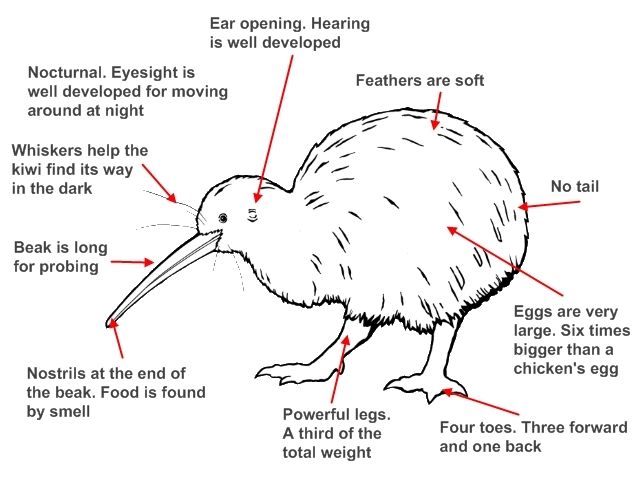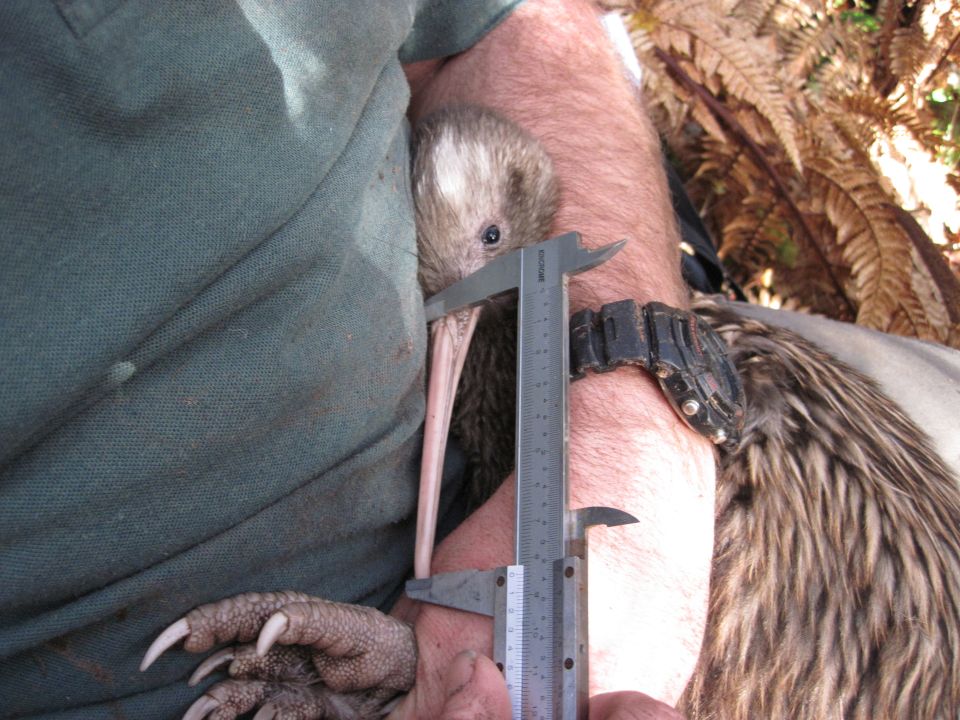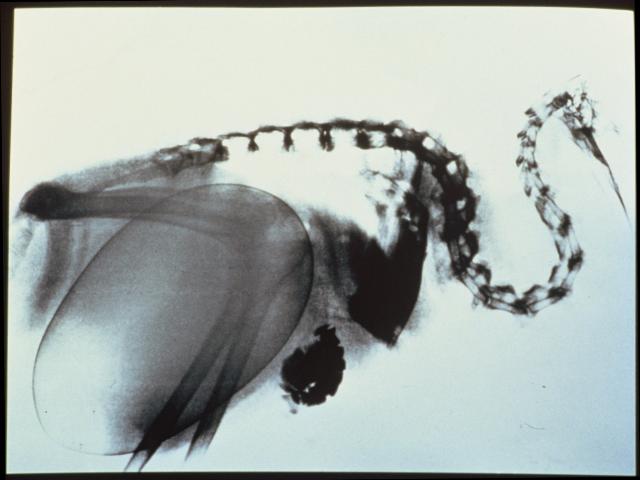← Contents: Discover more
Kiwi physical features are much like a mammal.
External features
The external features of a kiwi are what you can see from the outside.

- tiny wings (kiwi are flightless)
- no tail
- feathers very soft and hang loose, like hair
- very long bill with nostrils at the end
- legs are strong and muscular
- fleshy footpads and a silent walk
Senses

Kiwi have good senses for living in their environment.
- strong sense of smell
- excellent hearing
- cat-like whiskers on its face and around the base of its bill
- small eyes help it to see at night and in daylight too
Internal Features
The internal features are on the inside of a kiwi.

- cone-shape skeleton, with a strong neck and a small head
- no keeled sternum to hold the flight muscles
- bones filled with marrow. Being flightless, bones do not have to be extra light
- large nasal cavities, for a greater sense of smell
- blood temperature is much lower than most other birds; between 37°C and 38°C
Try the kiwi features quiz.
While the kiwi’s eyesight isn’t great, the parts of its brain devoted to smell and touch are large.
Audio Māori keywords:


